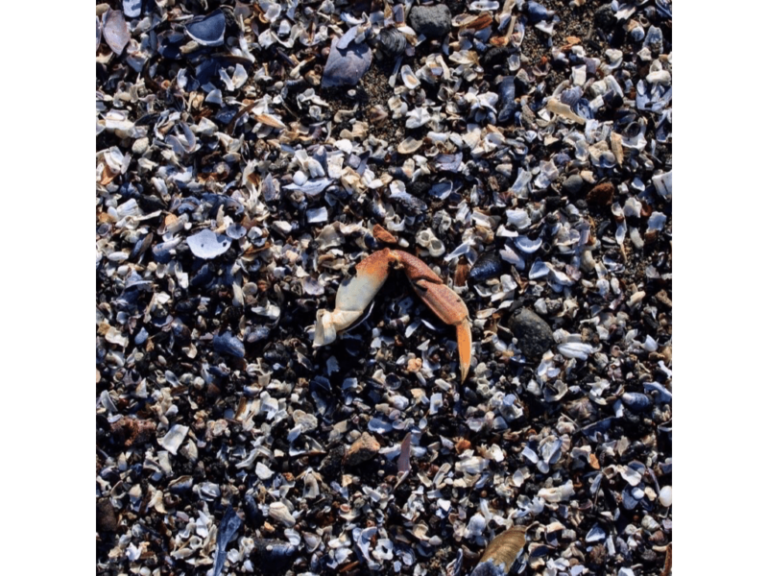The limbs of a crab are symmetrical, with a pair of cheliped (pincer-bearing) legs and four pairs of walking legs growing on either side of its body, usually of similar sizes. However, occasionally, one might come across a crab with a particularly small cheliped or walking leg. Interestingly, crabs possess a remarkable ability: when one of their limbs is lost, it can regenerate.
The primary tools that crabs use for feeding and defense are their pair of chelipeds, which are adorned with hairy bristles. When disturbed, a crab will raise its chelipeds high, forming an “eight” shape and opening its powerful pincer joints, displaying an imposing posture in preparation to attack or defend against enemies.
People may feel intimidated when capturing a crab in this defensive posture. However, simply pinching the sides of its carapace with the thumb and index finger renders it unable to harm you. If only one of its chelipeds or walking legs is grasped, it will ruthlessly clamp down on you. Yet, out of fear of losing its life, it often abandons the captured limb and flees.
The abandoned limb breaks off at a specific point: the joint between the basis and ischium. This location is highly susceptible to breakage. After the limb is discarded, a new one can slowly grow from this point. However, it requires multiple molts to gradually restore its original shape. Losing one limb does not significantly hinder a crab’s ability to live since the broken part has a special structure to prevent bleeding.
This phenomenon of self-amputation and regeneration is a common occurrence in the animal kingdom. For example, lizards can regrow their tails shortly after they are severed, and planarians can regenerate into complete individuals from fragmented body parts. However, some animals lack the ability to regenerate. For instance, if a frog’s leg is severed, it remains permanently disabled.
Self-amputation and regeneration in animals are the result of adaptation to the environment over millions of years. When faced with danger, without this ability, they would inevitably face the risk of extinction. The parts that undergo self-amputation and regeneration are the most vulnerable to attack by enemies. Some tissues do not possess this ability because they are not frequently subjected to injury.

